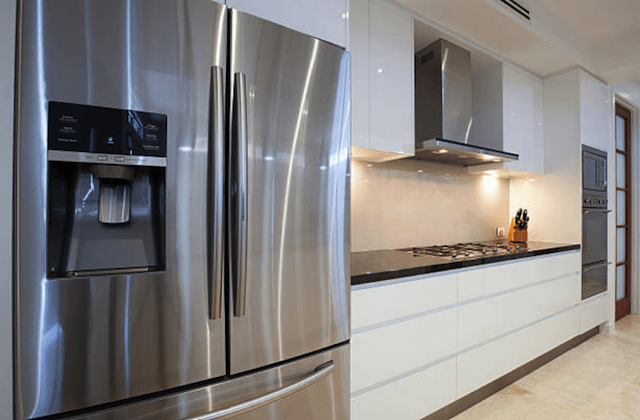
Longmont Appliance Repair offers refrigerator repair in Longmont, including professional services to repair broken ice makers. Learn about some common ice maker issues below:
Refrigerator ice makers are one of the most convenient inventions of all time. An ice maker is a small luxury most people might not appreciate. Ice makers are simple machines that don’t feature a lot of components that will go wrong with them.
Like with any appliance repair, there are a few basic things that should be reviewed before thinking the worst. And, it’s good to know, if necessary, you are able to replace an ice maker without replacing the entire fridge, depending on the model. First, let’s discuss a couple of the reasons for an ice maker not working.
When your ice maker is making ice but it is not dispensing the ice it is usually a mechanical issue vs. an electrical failure. This happens when reorganizing things around in the freezer unit, you accidentally jam the control arm up or down. Often the ice maker can get blocked with something, even another piece of ice. First, check to see if there is ice or food blocking this part from operating properly.
Before beginning the steps of clearing out the freezer, be sure the ice maker is turned on. This is done by pulling the metal control arm in the down position. From time to time, moving food around in the freezer can put it in the off position. If the control arm is free, then there could be food stuck inside of the ice maker or it is not getting a good connection.
Check the Control Arm
If the switch is down and there is ice but it’s not ejecting it, there might be a mechanical or electrical failure. This is going to need some more diagnosing. Ready to get started? First, we must check the electrical connection. This can be unplugged from the back of the freezer when moving or shifting the freezer contents.
To check this, first unplug the fridge and move from the wall. Then, turn off the freezer’s water supply valve. Locate the valve on the back of the inside of the freezer. Essentially this is what plugs the ice maker into the freezer unit. Be sure that it is actually plugged in correctly.
Then, remove any ice that is in the ice maker itself. This can be done by adding a little water to help to get ice that is in there out.
Once done, turn on the power to the fridge and then turn on the ice maker. It may take the solenoid a couple of seconds to react and fill the mold. Once the mold is full, wait around 4-5 hours to see if you’ve cleared the problem.
Check for Frozen Lines
Other ice maker failures that can cause your ice maker to not make ice are frozen lines. The water lines might be blocked with frost. This is an easy problem to fix.
First, unplug the freezer and find the shut off valve. Shut the water off and then grab a hair dryer to heat up the water line or just let the freezer sit turned off for a few hours and wait until the water line is thawed.
Some brands and models that have a water filter that can freeze or ice over. For these situations, locating the filter is the first step. Then repeat the same process that was done for the frozen water line.
When your ice maker isn’t making large enough pieces of ice, there’s an issue with the ice maker settings. To adjust the the ice maker settings, take the top part of the cover off and locate a basic knob that has plus and a minus symbols. For this process, you might need a flat head screwdriver.
ADDITIONAL REFRIGERATOR RESOURCES
- Refrigerator Noisy
- Refrigerator Water Dispenser Not Working
- Refrigerator Not Cooling
- How Does a Refrigerator Work?
